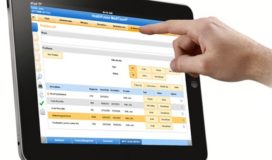Health IT Trends For 2020
What are the major Health IT trends in 2020? Let’s take a look at how new technologies can help healthcare organizations deliver better patient care.
Scheduling appointments with mobile therapists
Most humans are busy, stressful, and impulsive. If you want to see a therapist for only one hour, but the regular appointments in your life are longer, and require a lot of juggling, then using the service has your best interests at heart.
We see this as a step towards more integrated, even faster-paced scheduling. Most places these days want to be able to schedule everything on the same day. We see this as a feature that helps bring efficiency to the scheduling of patients. Through telemedicine, in the future, you could be booking your appointment for the following week or the month after.
The initial appointment with a mobile therapist
You can set up your appointments with your mobile therapist in an unlimited amount of time. During those initial appointments, your mobile therapist will do most of the work for you. However, once the initial session is over, the mobile therapist will work to schedule an appointment for you later on.
Telehealth patients accessing doctors for consultations.
Beyond the past few years, telehealth has slowly found a foothold in the population. In 2013, the nation’s first interventional cardiology clinic with two practitioners, one in Hartford, Connecticut, and one in Nashua, New Hampshire, became the first in the country to accept patients solely on the basis of telehealth.
It is only a matter of time until telehealth is widely adopted by the population.
Securing health information
With consumers growing increasingly fearful of having their medical records get hacked, they’re looking to secure the process of healthcare information exchange.
Obtaining this information is expensive and cumbersome, making it less likely that people will want to develop a habit of sharing it with the millions of devices in their homes. Instead, many are turning to big data — data collected by smart homes and connected cars — to gain new insight into health.
Artificial intelligence will continue to impact the healthcare industry
In the next few years, healthcare applications could include predicting a patient’s health status in advance, helping doctors manage pain and prescribe opioids or monitoring a patient’s progression through rehabilitation programs or hospice. This will open the door to many new applications in healthcare and expand the applicability of AI to many medical issues that currently require human assistance.
The challenges to implementing the technology are significant. Patient data needs to be managed securely and information needs to be accessible to the appropriate parties. Part of the problem is that information isn’t evenly distributed. Data is most often collected by hospitals and pharmaceutical companies, which means that the data isn’t necessarily freely available to everyone. Patients should have the ability to access and properly use the data they share.
Artificial Intelligence transforms medical decisions based on hundreds of sensors and artificial intelligence algorithms. The application will result in improved, personalized patient care experiences using AI.
Machine learning is a huge part of healthcare.
The amount of data generated from diagnosis and treatment will also be increasing. By turning our streams of data into knowledge and using machine learning to parse through that knowledge, we’ll be able to discover new and more precise answers.
Making sense of large amounts of data and putting it into action requires analyzing and understanding the data by going from inputs to outputs. Machine learning is an ideal tool for this in 2020 and later on.
Further progress in electronic medical records storage and usage
Healthcare providers that store medical records digitally will be able to use other systems that have no interface with the Internet, such as other clinical software and devices.
Use computer and machine vision in healthcare
Machine vision will help doctors to identify muscle injuries, visualize tumors, track Ebola cases and assess health threats. Machine vision will provide answers to hundreds of millions of questions. It will also help to evaluate patients and administer appropriate treatments.
3d Printing
There are some ideas on how 3D printing can be used to augment medical care.
“We see 3D printing as the next big wave of biologic engineering,” said Don Gulbrandsen, Ph.D., a colleague at the Collaborative at MGH.
For example, doctors can process cancer samples on a printer that could print nanostructures with thousands of tiny pores on them, which might be drug-delivery devices.
The printing technology, which has been around for about a decade, is already being used to do other things, such as plastic kidney-surgery tools.




